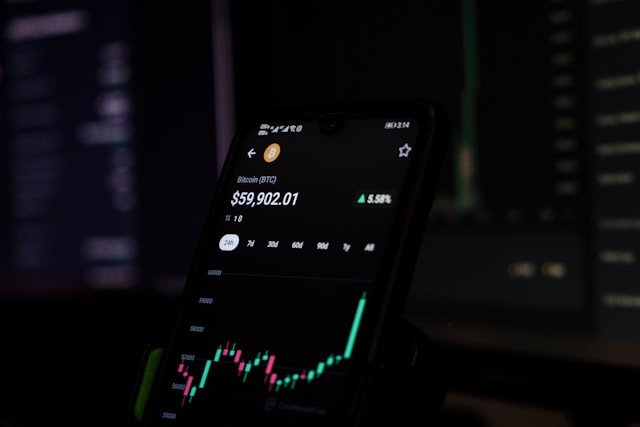Latest Trends in Blockchain Technology
Although the blockchain technology was originally developed only as an underlying structure for Bitcoin, it has long developed beyond the emergence of this cryptocurrency. Many experts and analysts call this innovation one of the most breakthrough, changing various sectors of the global industry. The article examines the latest trends in the development of blockchain technology and tells how they are changing the world.
1. Introduction to Blockchain Technology
Blockchain is a decentralized digital ledger used to record a series of multiple transactions within several computers to guarantee data security and integrity. The information is stored on blocks that attach to a chain and are organized chronologically. In this context, each block is composed of various transactions, and any data added to it becomes immutable.
Thus, blockchain is an effective and secure data storage approach. Blockchain’s popularity and the hype grown around it have been derived from the transparency and immutability of data.Blockchain:orian is a revolutionary technology that eliminates the need for trust.
This innovation has sparked considerable excitement and investment, as development has rendered new applications feasible in various fields.
2. The Rise of Decentralized Finance (DeFi)
Decentralized finance, also known as DeFi, is one of the most recent blockchain technology trends. DeFi is a decentralized system that enables traditional financial systems, including loans, insurance, and trading using blockchain technology. This means that banks and other intermediaries are not required. A smart contract is a self-executing contract where the terms are included in the code directly, used by DeFi systems to effectuate financial transactions.
Financial services have become more efficient, transparent, and available as a result of it. In addition, the value locked in DeFi protocols has exploded in recent years, indicating the sector’s rapidly increasing importance to the traditional financial ecosystem.
4. Blockchain in Supply Chain Management
The most recent innovation of the latest trend is using blockchain technology in supply chain management. With full transparency and immutability, blockchain is an excellent tool for locating products across the supply chain. A company is freed to record every move, the raw material to the ultimate consumer, ensuring product authenticity and quality.
This is especially critical for industries including food and pharmaceuticals, where product origins and safety are required. Companies can increase traceability and minimize fraud while improving overall supply chain performance with blockchain.
5. Central Bank Digital Currencies (CBDCs)
Another major milestone in blockchain’s history is Central Bank Digital Currencies . CBDC is a digital form of a country’s fiat currency issued and regulated by the country’s central bank. By incorporating the benefits of blockchain such as security and speed with the reliability and confidence in government-backed currencies, countries can produce their form of digital money.
Several countries continue to discover and experiment with CBDCs to update their financial systems, lower their transaction costs, and improve their economic inclusion. They have the power to replace the method we conduct business by offering a government-controlled digital alternative to decentralized digital currencies.
6. Blockchain Interoperability Solutions
Another trend among the latest in blockchain technology that pays much attention to its development is blockchain interoperability. In the course of the development of the number of blockchain platforms, it was impossible to avoid the need for their interaction and contact with each other.
These solutions consider possible options for collaborating different blockchains to transmit and complete transactions. Its main task is to enable the integration of multiple blockchains in terms of data transmission and publishing. For example, projects like Polkadot and Cosmos are creating protocols for various blockchains to connect and transmit data.
Interoperability is necessary to unite the whole blockchain into a single ecosystem, reduce fragmentation and open the full scope of use.
7. Energy-Efficient Consensus Mechanisms
Traditional blockchain networks like Bitcoin rely on consensus mechanisms such as proof-of-work . Although these mechanisms are some of the most secure, they are also among the most energy-intensive. Recent exploitation of the environmental damage that PoW causes has triggered the need for more sustainable alternatives, with newer blockchain solutions becoming environmentally friendly. Proof-of-stake, for example, secures the network by demanding validators to stake some amount of a specific cryptocurrency.
PoS requires significantly less power than PoW. Adapting Ethereum 2.0 utilizing PoS provides a prime example of the shift to cleaner blockchain alternatives.
8. Blockchain in Healthcare
One of the constantly growing trends that have already influenced the healthcare sector is blockchain. By making it possible to store and manage patients’ data securely and anonymously, it ensures sensitive information’s security and privacy.
It enables multiple healthcare providers to share the patient’s records in a highly-protected manner, thus creating better opportunities for coordination and making care more continuous.
Furthermore, blockchain can be used to simplify the drug development and clinical trials, given its opportunity to secure data and support the process. It makes it possible to protect medicine against counterfeit and verify its authenticity.
10. Blockchain in Voting Systems
One of the most promising implementations of blockchain technology is voting systems. Blockchain solves a lot of problems around the traditional process, such as fraud, tampering, and lack of transparency. Blockchain records votes in a secure and immutable way, thus ensuring the integrity of the election process.
A number of pilot projects and initiatives have proven such systems’ feasibility and possibility. This development can make elections more transparent, easier, cheaper, and trusted, which can improve public opinion.
11. Conclusion
Many new trends or trends in blockchain technology will show its potential for transformation in several industries. Blockchain technology, facets, create an opening for innovations in areas such as decentralized finance, non-fungible tokens, supply chain management, and even health care.
As new trends continue to develop, an even more exciting venture can be take place and await people in the era of blockchain. To thrive in this new trend, it is critical to consider the blockchain technology trends described above.
By doing so, investor’s, business people or user’s manager may be able to compete in the blockchain market.
Frequently Asked Questions (FAQ) About the Latest Trends in Blockchain Technology
1. What are the latest trends in blockchain technology?
Answer: The most recent developments in blockchain technology are the emergence of decentralized finance, the creation of non-fungible tokens, the use of blockchain in supply chain management, inventions and developments of central bank digital currencies, improvements in blockchain interoperability solutions, transition to more eco-friendly consensus mechanisms, the use of blockchain in healthcare, the addition of blockchain technology to Internet of Things, and the implementation of blockchain into voting system. These trends indicate the increased significance and versatility of blockchain technology.
2. How is decentralized finance (DeFi) transforming the financial industry?
Answer: Decentralized finance is revamping the financial sector where traditional financial representation independently operates using block-chain technology. DeFi uses smart contracts to offer financial services without intermediaries such as banks. Consequently, the financial representations such as loans, insurance and exchanges become efficient, transparent and easily accessible via the network. Over the years of its development, there has been a massive growth in total value locked in DeFi protocols, which shows DeFi’s ability to revolutionize the existing traditional financial system and not just modify the current business concept.
3. Why are non-fungible tokens (NFTs) important in the digital art world?
Answer: A non-fungible token or NFT is critical in the digital art industry due to a different method of presenting the ownership and the need for the assurance of originality and uniqueness of digital assets. That is, an NFT is a different digital token in that it is not exchanged like Lake coins e.g., Bitcoins but rather as “unique”.
Therefore, it becomes possible for an artist to sell their digital artwork to a final consumer or collector, with assurance that no identical artwork will be found in the artists’ collection pool. However, with the benefit of revenue diversification for the artist, there have been cases where singular original copies sold for millions, thus skewing the primary or common art collectors.





